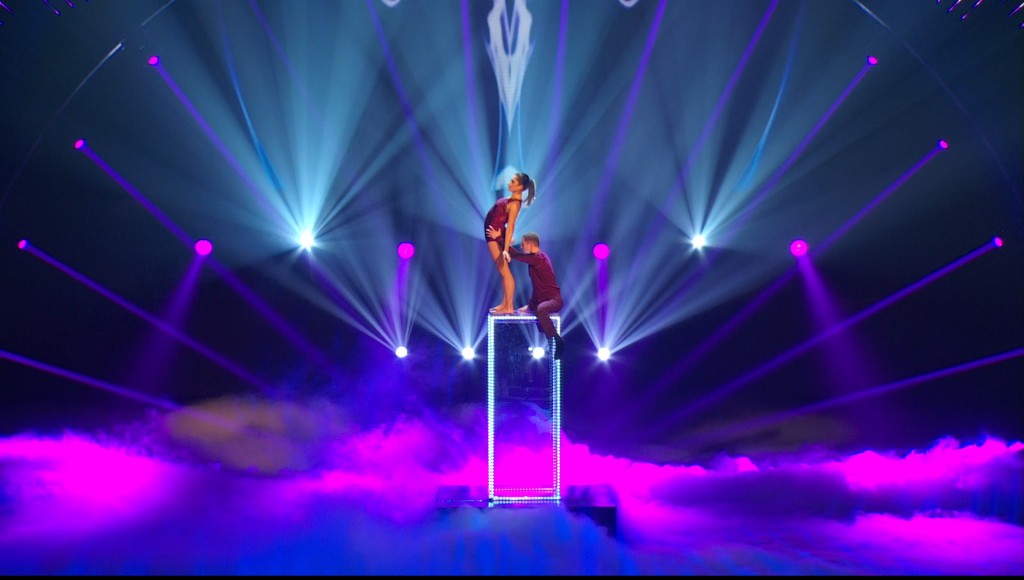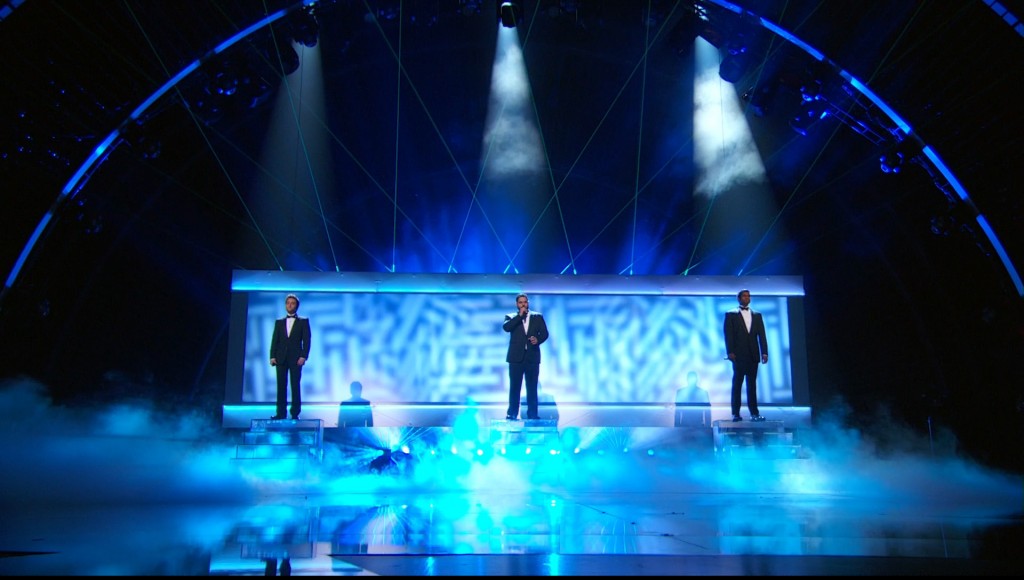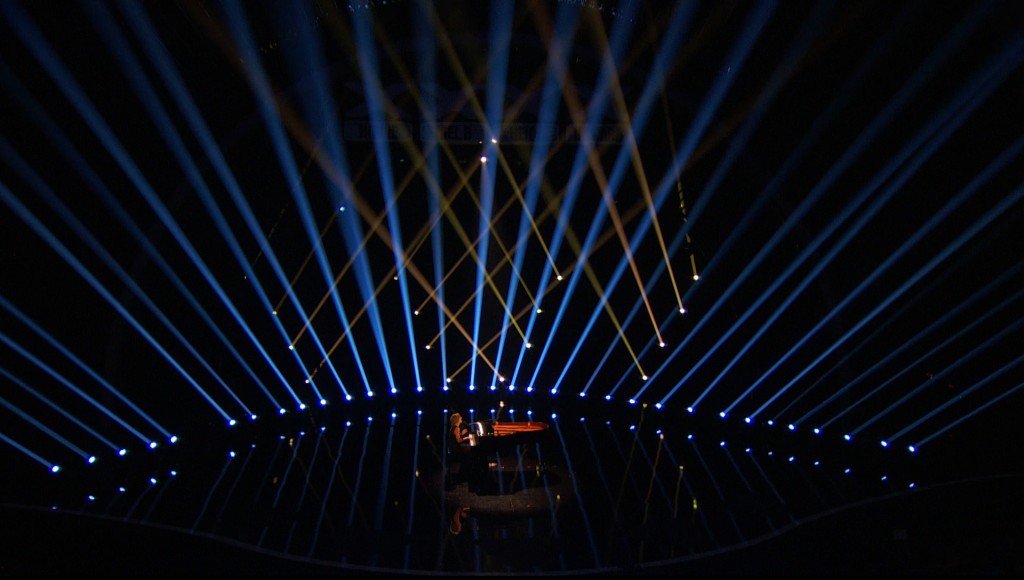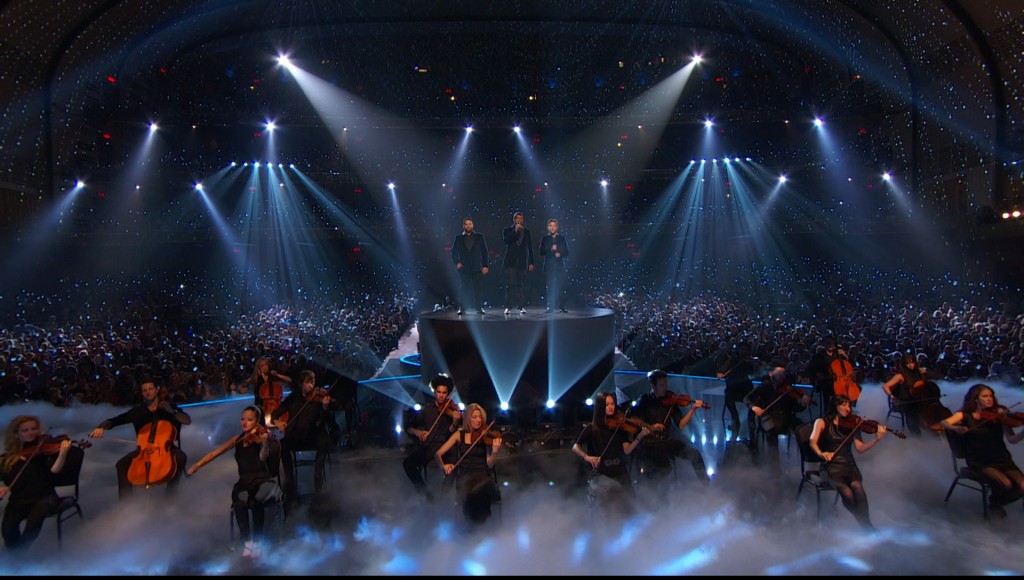Joshua Hutchings – Lighting Imagination
Posted on November 4, 2014
“Imagination is more important than knowledge,” wrote Albert Einstein. “Knowledge is limited. Imagination encircles the world.” Einstein never positioned an LED on a rig, but he did know a thing or two about light! More to the point, the great physicist would have totally appreciated the approach that Joshua Hutchings takes to the art and science of lighting design.
Although he possesses an abundance of knowledge, Hutchings allows his prolific imagination to take his lighting designs places that mere know-how will never get you to. He has to in his position as Lighting Director for America’s Got Talent, which calls for him to illuminate a disparate collection of performers, from singers to cyclists, on a massive Radio City Music Hall Stage. His ability to balance the diverse demands of TV lighting has propelled him to a phenomenal career, which includes stints as Lighting Director for American Idol, The X Factor, and MTV Movie Awards in addition to his AGT position.
The winner of the 2009 Emmy Award for lighting design, in addition to three Emmy nominations, and owner of Illumination Advocates (West Hills, CA), Hutchings let us tap into his imagination recently. We were grateful for the opportunity and hope you enjoy what we found.

Your work on America’s Got Talent, American Idol and other programs achieves a remarkable balance; it’s very dramatic and flowing, almost like a touring event; yet it’s also very supportive of the individual performer, making him or her the star. Can you tell us about your philosophy in this regard?
“That is always the goal that we are trying to achieve. As a team we are always trying to support the act in order to have the best overall performance. Since most of these shows are a competition, we try to enhance the performance without the production becoming the act. America’s Got Talent, which for the past two seasons has been shot at Radio City Music Hall, is so large that the scale of the show is similar to an arena tour. The challenge with a stage this large is to have ways of shuttering it all down to an intimate performance. I have the privilege of working with really great video content and media server programmers to really deliver a great blend of lighting and video. “
On a related subject, how do you balance your dramatic lightshow on stage with getting the key lighting just right for individual performers’ skin tones?
“For television, the first and foremost criterion is the key lighting of the performers. Once that is dialed in, you get to the fun part of adding in the performance lighting. It is a balance making sure that the lighting enhances the performances, rather than becoming the performance.”

Would you say your TV work is closer to theatrical or concert touring lighting? Or is it a combination?
“I think it swaps back and forth. It really depends on the show and particular performance. The plots really need to be a combination of the two. We need all the toys of the concert world, yet we also need the workhorses of the theatrical environment. That is especially evident on AGT, where in a single show we can have a rock group, a magician, a comedian, a ballet troupe, some singers, and a motorcycle stunt act. We need to have a great deal of flexibility to be able to punt and change the creative of a performance when it isn’t working. I think it’s nice to have the variety of styles to break up a 2-hour show, with 12-14 performances.”
We’ve heard your background described as being the school of hard knocks. You’ve done a lot of different thing, from backyard DJing to being the lighting programmer on major TV shows. How has this impacted your work as an LD?
“Oh wow, I don’t know where you heard about backyard DJing, but I love that rumor! I believe that experience in many of the different genres within and outside the lighting industry has had a real impact. You never really know where you will find motivation for a design — from installation art pieces, to movie scenes, to magazine layouts. Certainly being a programmer for many different types of shows and getting to program for many different LDs has had the most impact towards my work as a designer. I try and make my plots programmer-friendly since there is never enough time for programming.”
Ok, then backyard DJ rumors aside, can you tell us more about your background? Where you’re from; how you got started in lighting?
“I guess I can track my interest in lighting back to a crush that I had on a girl when I was 12. I followed her into a small strip mall theatre in the town I grew up in. I soon became more interested in the lighting than her. Not very long after, I rode my bike to the community theatre and asked for a job. They were incredibly nice and basically let me hang out and work with the other volunteers, and that’s where I started to program my first lighting console.
“I also met my first mentor there, which really pushed me to go after this as a career. After high school I got a job at Disneyland in Anaheim as a stagehand and started to hone my craft. I worked for the mouse for around 10 years, when an LD that I was programming a special event for asked if I was interested in working in television. I spent the next few years working my way up the ranks in the TV world. Been there ever since….”
You’ve worked with Kieran Healy on American Idol; how did that influence your career? Who were the big influences on you along the way?
Kieran Healy has been and continues to be a truly great mentor. He has had a dramatic influence on me and my career. Getting to spend those years programming for him on American Idol and many other shows is the reason I am where I am now.
“In addition to Kieran I have truly had some of the most amazing mentors along the way. David Masterson was the Artistic Director at the community theatre that I grew up at. Bill Avzaradel at Disneyland was always supporting my advancement. Then the many LDs that have given me all the opportunities to get here, John Morgan, Matt Ford, Simon Miles, Bob Barnhart, and Al Gurdon to name a few.”

If you didn’t go into lighting, what do you think you would have done?
“I honestly don’t know. I probably would have followed in my father and grandfather’s footsteps and become a dentist. I am very grateful that I didn’t need to do that.”
Some of the cues you’ve built and backdrops you’ve created for TV are amazing. Where do you get your ideas?
“The creative for the performances is a really great collaboration with some truly amazing Creative Directors and Producers. The ideas come from everything –from other performance pieces to art installations, architecture, cartoons, video games, really just about from anything and everywhere.
“The initial creative concepts are then fleshed out with all the departments, lighting, video content, staging, props, wardrobe, hair, music, audio, to name a few. There are well over 300 people working on these shows, so getting everyone on the same page is the real art. In a typical season of AGT or X Factor, we will have approximately 130-140 performances, so we do our best to keep all of the looks different and entertaining.
Is there a design element that you always start with when you work on something new? Or does it always vary?
“It really all varies. I think that every production has a different direction and look. In general I feel that the architecture of the production design is the first element of the function of the lighting design. I like to look for the lines and shapes present in the Set Design and try to accent those within the lighting plot. I want to help shape and define the environment with the fixture placements and selections.”
You use a lot of moving fixtures in your TV designs. What would you say to LDs who are leery of using moving heads in broadcast applications, because they worry about how the camera is going to catch the movement?
“I have found that is not really the case anymore. I think that the live television industry has really embraced the automated lighting market. We are now moving into a place where LED and automated lighting is the norm, and using large amounts of conventional lighting isn’t in the picture. I think that this will be more and more prevalent in all entertainment fields as the LED tech is advanced even further.”

Any advice on using set pieces like the Nexus panels for TV?
“I would say just to use them. They look really great on camera, the color quality is amazing. They add a lot of flash to any performance and can fit in great with just about any system. You can use them in many different applications, from eye candy, to a wash light, to a low res video wall. In general they are incredibly multi-functional.”
How does the creative process work with directors and producers? Is there a lot of back and forth between them and you as an LD?
“In any creative process collaboration is critical. There needs to be a free flow of information with all involved. So I would have to say that yes there is quite a bit of back and forth, with many different departments.”
What tools do you use to design?
“A really great team! I’m not sure if that is really what you’re asking, but without a really great team, the design is pretty much useless. Our show crews are amazing and make some really incredible set changes in a 3-minute commercial break. I am constantly in awe of what they do.”
Is your set on America’s Got Talent all LED?
“For the most part yes. It is very video driven!”
When you see new lighting technology, does it give you new ideas for your designs? Or is it more a matter of giving you a new way achieve something that you had in mind already. In other words, does technology change the creative process itself or just give you a new means of carrying it out?
“I think that is goes both ways. There are ideas that you have in the back of your mind that you just don’t have the ability or technology to do. The idea just festers until you see that new product or a new technology that was the missing piece of the puzzle.
“At other times you will see something at a trade show or demo, and you start to see how you can use it in a new and different way. It’s always fun to use something that was designed for one application and use it for a completely different application. This is where I think that seeing something new can drive a creative.”
You’ve accomplished so much in lighting. Is there any project that you haven’t done yet that you’d like to?
“I think that it would be fun to work on a huge outdoor opera. The scale of some of those shows is out of this world (sometimes more literally than figuratively). I think that the collaboration with some of the directors who do that type of live entertainment is exceptional.”
Looking back on the TV programs of the past, is there one that you wish you could have done lighting for if you were around back then or it was still around now?
“I can’t think of any television programs of the past that I’ve ever really wanted to work on, but there certainly are people that I would have loved to work with. The first name that comes to mind would be Bill Klages. I have heard many really great stories from people who got to work with him.”
How would you like to be remembered as an LD?
I’m not sure how to answer this. I think that I have not yet become the LD that I would want to be remembered. I would hope that I will be able to reinvent myself as an LD a few times over before needing to be remembered.”